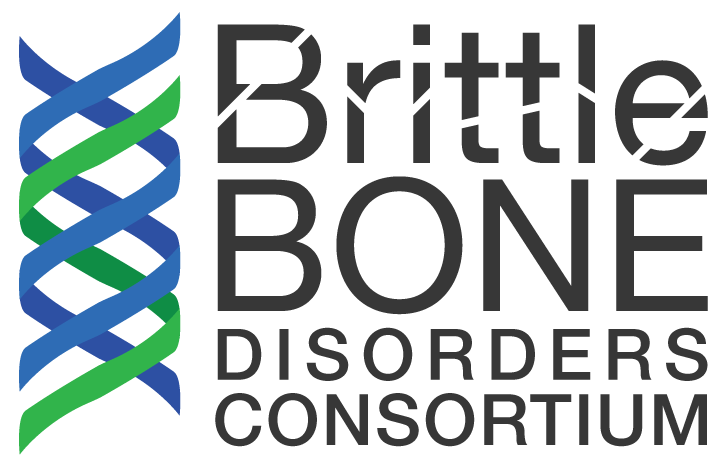Braces, retainers, aligners—for many kids, orthodontic treatments mark the years of adolescence. Most patients want straighter teeth for cosmetic reasons, but for some, misaligned teeth can significantly affect their quality of life. Where does the oral health of kids with osteogenesis imperfecta (OI), a rare genetic disorder that weakens the structure of bones and teeth, fall on this spectrum?
To find out, researchers from the Rare Diseases Clinical Research Network’s Brittle Bone Disorders Consortium (BBDC) asked OI patients themselves. The study, recently published in the Journal of the American Dental Association, surveyed adolescents to learn about their oral symptoms and how these affect their quality of life. Participants’ answers are clarifying the oral health needs of kids with OI and guiding future research for orthodontic interventions.
People with OI tend to experience malocclusion (misaligned teeth and jaws) more often than the general population, but they have fewer options for treatment. Among all known types of OI, there is a range of severity. Some patients experience frequent bone fractures, hearing loss, and respiratory problems.
Treatments for OI usually focus on these symptoms, which can be life-threatening. Because of this, malocclusion is often overlooked. That’s why the research team rooted the study in first-hand experiences from patients.
“For us to evaluate and improve these patients’ quality of life, we need to have a good understanding of how they feel,” says Mohammadamin Najirad, DDS, MSc, lead author on the study. “We have to address what they want us to address. Our focus is on children, because it’s the best time for interceptive interventions.”
Zoe Fang, an OI patient and study participant, started wearing braces in the eighth grade. Her malocclusion made it difficult to chew properly. Eating foods like chicken and salads became a tiring chore—she had to move her jaw forward and upward to take each bite. By the time she joined the study at age 16, her braces were off, but the malocclusion was returning.
Through answering the study’s Child Perceptions Questionnaire (CPQ), Fang and 137 other OI patients described how they think and feel about their oral health. The survey covered four key areas—oral symptoms, functional limitations, emotional wellbeing, and social wellbeing.
“I did have to be very honest with myself while taking the survey,” says Fang. “The questions include things like your level of self-confidence and interactions with friends. It’s really thorough, but it’s also easy to complete—most of the questions can be answered by checking a box.”
Researchers created two versions of the survey—one for younger children (ages eight through 10) and one for older adolescents (ages 11 through 14). Responses were adjusted for variables of age, gender, and OI type. Using an analysis technique called multivariable ordinal logistic regression, the team estimated the association between malocclusion traits and oral health-related quality of life.
In the younger group, results from kids with malocclusions and those without were relatively similar. However, researchers found that kids in the adolescent group with posterior crossbites or open bites experience significantly higher degrees of functional limitations than those without.
“Our research shows that these self-reported functional limitations have a high impact on quality of life,” says Jean-Marc Retrouvey, DMD, MSc, FRCD, co-author on the study. “Patients experience difficulty chewing, jaw pain, and mouth breathing. These are their priorities for interventions.”
In Fang’s case, Retrouvey is partnering with local orthodontists to prepare her teeth for jaw surgery. A new set of braces are optimizing her underbite and aligning her teeth for a future surgery that will realign her jaws. Now age 19, she’s a sophomore at the University of Florida, playing saxophone in the marching band and majoring in microbiology. Retrouvey hopes to help more kids like Zoe live the best possible quality of life.
“Now we know what patients with OI want for orthodontic treatments,” says Retrouvey. “The next step is identifying the most viable interventions that will make the greatest impact on their wellbeing.”
Read the full study in the Journal of the American Dental Association.
The Brittle Bone Disorders Consortium (BBD) is part of the Rare Diseases Clinical Research Network (RDCRN), which is funded by the National Institutes of Health (NIH) and led by the National Center for Advancing Translational Sciences (NCATS) through its Division of Rare Diseases Research Innovation (DRDRI). BBD is funded under grant number U54AR068069 as a collaboration between NCATS, the National Institute of Arthritis and Musculoskeletal and Skin Diseases (NIAMS), the Eunice Kennedy Shriver National Institute of Child Health and Human Development (NICHD), and the National Institute of Dental and Craniofacial Research (NIDCR).


